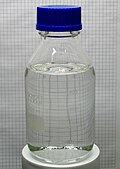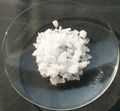Vitriol: Difference between revisions
CSV import |
CSV import |
||
| Line 32: | Line 32: | ||
[[Category:Medicine]] | [[Category:Medicine]] | ||
{{stub}} | {{stub}} | ||
<gallery> | |||
File:Blue_vitriol_monocrystal.jpg|Blue vitriol monocrystal | |||
File:Iron(II)-sulfate-heptahydrate-sample.jpg|Iron(II) sulfate heptahydrate sample | |||
File:Sulphuric_acid_96_percent_extra_pure.jpg|Sulphuric acid 96 percent extra pure | |||
File:Cobaltsulfat.JPG|Cobalt sulfate | |||
File:Diethyl_ether_by_Danny_S._-_001.JPG|Diethyl ether | |||
File:Aluminium_sulfate.jpg|Aluminium sulfate | |||
File:Síran_železitý.JPG|Síran železitý | |||
File:Zinc_Sulfate.jpg|Zinc sulfate | |||
</gallery> | |||
Latest revision as of 11:22, 18 February 2025
Vitriol is a term historically used to refer to several different sulfate compounds, many of which have been used since ancient times for various purposes. The term itself is derived from the Latin vitriolum, meaning "glassy", due to the shiny, glass-like appearance of the compounds.
History[edit]
The use of vitriol dates back to ancient times, with the earliest known references appearing in the works of Pliny the Elder and Dioscorides. These early uses of vitriol were primarily medicinal, with the compounds being used to treat a variety of ailments.
Types of Vitriol[edit]
There are several different types of vitriol, each named for the specific metal ion they contain. These include:
- Blue Vitriol (Copper(II) sulfate)
- Green Vitriol (Iron(II) sulfate)
- White Vitriol (Zinc sulfate)
- Red Vitriol (Cobalt(II) sulfate)
Uses[edit]
Historically, vitriol was used in medicine, alchemy, and industry. Today, the compounds formerly known as vitriol are used in a wide range of applications, from agriculture to chemistry to medicine.
See Also[edit]
References[edit]
<references />










